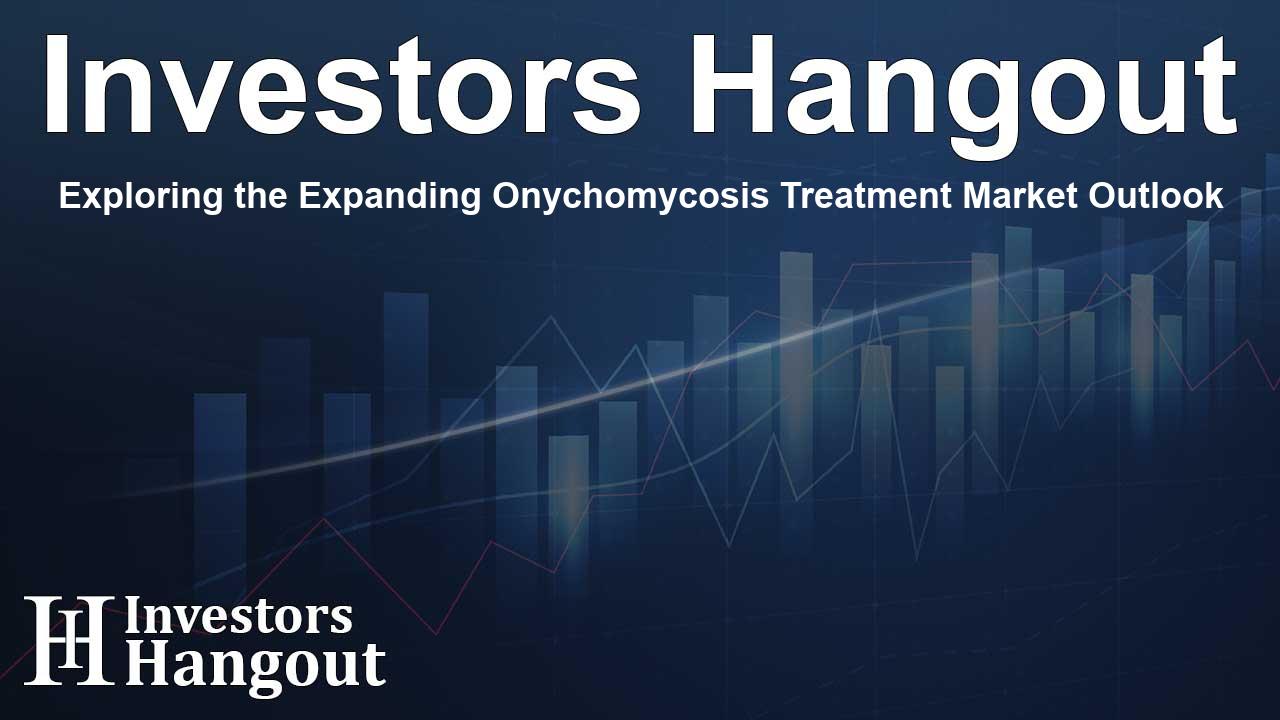Exploring the Expanding Onychomycosis Treatment Market Outlook

Significant Growth in the Onychomycosis Treatment Market
The onychomycosis treatment market shows promising signs of growth, projected to expand from a value of USD 3.5 billion in 2023 to USD 5.05 billion by 2031, displaying an impressive compound annual growth rate (CAGR) of 4.7% during the specified forecast period. This trend is stirring considerable interest in the pharmaceutical and healthcare industries, as effective treatment options for this prevalent nail fungal infection become more critical.
Understanding Onychomycosis
Onychomycosis, commonly known as nail fungus, manifests as discoloration and weakening of the nails, and is often exacerbated by a variety of health factors. With an increasing elderly population and a rise in diabetes and compromised immune systems, the incidence of this infection is climbing globally. As awareness about nail health and hygiene has grown, so too has the scrutiny of treatment and management techniques available in the healthcare landscape.
Detailed Market Segmentation
The global onychomycosis treatment market can be analyzed through various segments, including type, treatment, and geographical region. The major classifications by type comprise Distal Subungual Onychomycosis, White Superficial Onychomycosis, and Proximal Subungual Onychomycosis, among others. Under treatment modalities, the market is primarily divided into oral and topical treatments. Geographically, it includes North America, Europe, Asia Pacific, Latin America, and the Middle East and Africa.
Market Coverage Analysis
The following aspects elucidate the coverage within the onychomycosis treatment market report:
- Market Revenue in 2023: USD 3.5 Billion
- Projected Value by 2031: USD 5.05 Billion
- Growth Rate: Poised to grow at a CAGR of 4.7%
- Forecast Period: 2024–2031
- Units of Forecast: Value (USD Billion)
Key Drivers of Market Expansion
The increasing prevalence of fungal infections is a significant driver of market growth. As more individuals become aware of the condition, combined with rising needs for effective healthcare solutions, there is a growing demand for non-invasive and over-the-counter medicinal options that are more accessible for patients. This trend is particularly vital in areas where healthcare access poses challenges.
Patient Care and Treatment Preferences
Topical Treatments at the Forefront
Topical treatments are rapidly gaining traction within the market due to their convenience and lower risk of systemic side effects. Various formulations, including gels, lacquers, and creams, enhance application ease and patient compliance. Recent technological advancements have also bolstered the efficacy of these topical agents, leading to increased market favorability.
Dominance of Distal Subungual Onychomycosis
The segment accounting for the majority of diagnoses within the onychomycosis market is Distal Subungual Onychomycosis. It typically starts at the tip of the nail and can spread to the cuticle, significantly affecting the nail structure and appearance. Its widespread nature among patients underscores the requirement for robust treatment solutions.
Regional Dominance and Growth
North America currently leads the market, attributed to the high prevalence of fungal infections combined with advanced healthcare infrastructure. The continued focus on nail health and early intervention practices makes it a front-runner in treatment innovations. Conversely, the Asia Pacific region is emerging as the fastest-growing market, driven by an aging population and increased healthcare access, propelling treatments into broader availability.
Addressing Challenges in the Market
Despite the optimistic outlook, challenges continue to pose risks to growth. High costs associated with advanced treatment options can deter patients. Moreover, the side effects linked with some oral antifungal medications may limit usage. Ensuring awareness and access to available treatments stand crucial for addressing these restraints, particularly in developing areas.
Frequently Asked Questions
What is the current size of the global onychomycosis treatment market?
The global onychomycosis treatment market was valued at USD 3.5 billion in 2023.
What is driving the growth of the onychomycosis treatment market?
The increasing prevalence of fungal infections and rising awareness regarding nail health are key factors driving growth.
Which region holds the largest market share in onychomycosis treatments?
North America dominates the onychomycosis treatment market.
What type of treatments are gaining popularity?
Topical treatments are rapidly gaining popularity due to their ease of use and lower side effects.
What are the common challenges faced in this market?
High treatment costs and the side effects of certain medications remain significant challenges in the onychomycosis treatment market.
About Investors Hangout
Investors Hangout is a leading online stock forum for financial discussion and learning, offering a wide range of free tools and resources. It draws in traders of all levels, who exchange market knowledge, investigate trading tactics, and keep an eye on industry developments in real time. Featuring financial articles, stock message boards, quotes, charts, company profiles, and live news updates. Through cooperative learning and a wealth of informational resources, it helps users from novices creating their first portfolios to experts honing their techniques. Join Investors Hangout today: https://investorshangout.com/
Disclaimer: The content of this article is solely for general informational purposes only; it does not represent legal, financial, or investment advice. Investors Hangout does not offer financial advice; the author is not a licensed financial advisor. Consult a qualified advisor before making any financial or investment decisions based on this article. The author's interpretation of publicly available data shapes the opinions presented here; as a result, they should not be taken as advice to purchase, sell, or hold any securities mentioned or any other investments. The author does not guarantee the accuracy, completeness, or timeliness of any material, providing it "as is." Information and market conditions may change; past performance is not indicative of future outcomes. If any of the material offered here is inaccurate, please contact us for corrections.